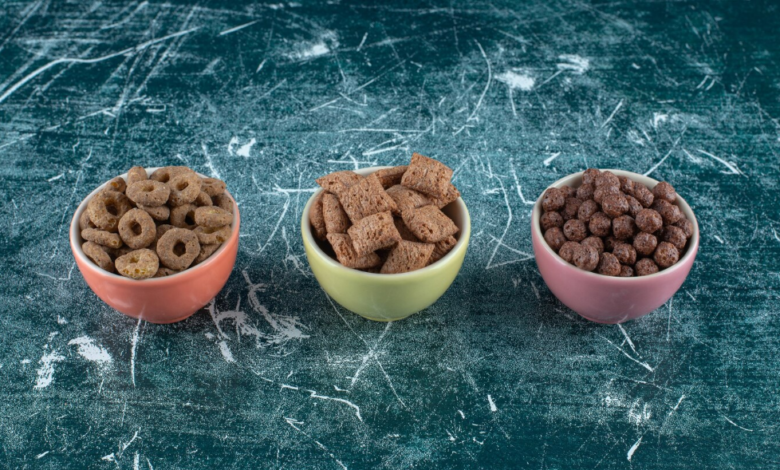Premium Dog Food Ingredients: What to Look For and Avoid

Understanding High-Quality Protein Sources in Premium Dog Food
Protein is super important for dogs. It helps them build muscle, stay energetic, and keep their immune system strong. When you’re picking out a premium dog food, you really want to pay attention to where that protein is coming from. Not all protein is created equal, and the quality makes a big difference in your dog’s health. I always check the labels carefully when I’m at the pet market near me.
The Importance of Whole Meats
Whole meats, like chicken, beef, or fish, are great sources of protein. They give your dog all the amino acids they need. Look for these listed as the first ingredient on the label. It means the food has a good amount of that protein source. It’s better than seeing a bunch of grains or fillers listed first. Whole meats are easier for dogs to digest and use compared to some other protein sources. I always try to find dog food with real meat as the main ingredient.
Identifying Named Meat Meals
Meat meals are another common protein source in premium dog food. These are made by drying and grinding meat. The key is to look for named meat meals, like “chicken meal” or “beef meal.” This means you know exactly what kind of meat is in there. Unnamed meat meals, like “poultry meal,” are less ideal because you don’t know the source. Named meat meals can be a concentrated source of protein, which is good, but make sure they’re from a reliable source. I usually check online reviews to see what other people say about the brand.
Avoiding By-Products and Unspecified Proteins
By-products are parts of the animal that aren’t typically eaten by humans, like organs, bones, and blood. While they can provide some nutrients, they’re generally not as high-quality as whole meats or named meat meals. Unspecified proteins are even worse because you have no idea where they’re coming from. It’s best to avoid dog foods that list by-products or unspecified proteins as major ingredients. I always read the ingredient list carefully to make sure I know what I’m feeding my dog. I’ve seen some pretty weird stuff listed on some labels.
Choosing the right protein source is a big deal for your dog’s health. Look for whole meats and named meat meals, and try to avoid by-products and unspecified proteins. Your dog will thank you for it with a shiny coat, strong muscles, and lots of energy. I always check the pet market near me for the best options.
Navigating Carbohydrates and Grains in Premium Dog Food
Beneficial Whole Grains
When you’re picking out a premium dog food, it’s easy to get caught up in the protein, but don’t forget about the carbs! Whole grains can be a good source of energy and fiber for your dog. Think about it like this: you wouldn’t want to eat only meat, right? Dogs need a balanced diet too.
- Brown rice
- Oats
- Quinoa
These grains are generally easier for dogs to digest and provide sustained energy. Plus, they offer some extra vitamins and minerals. It’s all about finding the right balance for your dog’s specific needs. I always check the ingredient list to see what kind of grains are used and how high up they are on the list. That gives me a good idea of how much of the food is actually grain-based.
Grain-Free Options and Their Considerations
Grain-free dog food has become super popular, but it’s not always the best choice for every dog. Some dogs have allergies or sensitivities to grains, and for them, grain-free can be a lifesaver. But for other dogs, grains are perfectly fine. The big thing to watch out for is what replaces the grains. Often, grain-free foods use things like potatoes, peas, or lentils to bulk up the carbohydrate content. These aren’t necessarily bad, but they can sometimes cause digestive issues in some dogs. Plus, there’s been some talk about a possible link between grain-free diets and heart problems in dogs, so it’s something to discuss with your vet. I know a lot of people who swear by grain-free, but I always think it’s best to do your research and talk to a professional before making a switch.
Complex Carbohydrates for Sustained Energy
Complex carbohydrates are your dog’s friend when it comes to keeping their energy levels steady throughout the day. Unlike simple sugars that give a quick burst and then a crash, complex carbs break down slowly, providing a more consistent source of fuel. Sweet potatoes, for example, are a great option. They’re packed with vitamins and fiber, too. Other good choices include things like beans and certain veggies. When I’m looking at a bag of premium dog food, I like to see a variety of complex carbs listed. It tells me that the manufacturer is thinking about long-term energy and overall health, not just filling the food with cheap ingredients. I’ve noticed a big difference in my dog’s energy levels when he’s eating food with good complex carbs. He’s more active and seems more satisfied after meals. If you’re looking for a pet market near me, check the ingredients of the food.
It’s important to remember that every dog is different. What works for one dog might not work for another. Pay attention to your dog’s individual needs and adjust their diet accordingly. If you’re ever unsure, your vet is always the best resource for personalized advice.
Essential Fats and Oils for a Premium Dog Food Diet
Fats and oils are super important in your dog’s diet. They’re not just about calories; they play a big role in keeping their skin healthy, their coat shiny, and their brain working well. When you’re looking at “premium dog food“, pay close attention to the types of fats included. It can really make a difference in your dog’s overall health. I was just at the pet market near me and the options were overwhelming, but reading the labels helped a lot.
Omega-3 and Omega-6 Fatty Acids
Omega-3 and Omega-6 fatty acids are like the dynamic duo of dog nutrition. They’re both fats, but they do different things. Omega-3s are known for helping with inflammation and keeping the heart healthy. Omega-6s are important for skin health and the immune system. The trick is getting the right balance between them.
- Omega-3 sources: Fish oil, flaxseed, algae oil
- Omega-6 sources: Chicken fat, sunflower oil, safflower oil
- Ideal ratio: Aim for a balanced ratio, often around 5:1 or 10:1 (Omega-6 to Omega-3)
Sources of Healthy Fats
Not all fats are created equal. Some sources are way better than others when it comes to [“premium dog food”]. You want to see ingredients that provide a good mix of fatty acids and other nutrients. Think about it like this: you wouldn’t just eat any old junk food to get your fats, right? Same goes for your dog.
- Fish Oil: Excellent source of Omega-3s (EPA and DHA).
- Flaxseed Oil: Plant-based source of Omega-3s (ALA), though not as readily converted to EPA and DHA in dogs.
- Sunflower Oil: Good source of Omega-6 fatty acids.
- Chicken Fat: Provides both Omega-6 fatty acids and flavor.
Choosing the right fat sources can significantly impact your dog’s health. Look for named sources and avoid generic “animal fat” without further specification. This ensures you know exactly what your dog is getting.
The Role of Animal Fats
Animal fats can be a good thing in [“premium dog food”], but it’s all about where they come from. Named animal fats, like chicken fat or pork fat, are generally okay because you know what animal they’re from. The problem is when you see just “animal fat” on the ingredient list. That could be anything, and you have no idea of the quality. It’s better to be safe than sorry and go for foods that specify the source of the fat. I always check the labels at the pet market near me to make sure I know what I’m buying.
Here’s a quick comparison:
| Fat Source | Omega-3 Content | Omega-6 Content | Notes |
| Fish Oil | High | Low | Excellent for inflammation |
| Chicken Fat | Low | Moderate | Adds flavor, good for skin |
| “Animal Fat” | Unknown | Unknown | Avoid; source is unspecified |
Vitamins, Minerals, and Antioxidants in Premium Dog Food
When you’re picking out the best food for your furry friend, it’s easy to get caught up in protein and fat. But don’t forget about vitamins, minerals, and antioxidants! These little guys are super important for keeping your dog healthy and happy. Think of them as the unsung heroes of premium dog food.
Naturally Sourced Vitamins and Minerals
Okay, so what does “naturally sourced” really mean? It basically means that the vitamins and minerals come from real food ingredients, not synthetic additives. For example, instead of adding vitamin E as a separate ingredient, a good dog food might use sunflower oil, which is naturally rich in vitamin E. Sweet potatoes are a great source of Vitamin A. It’s all about getting those nutrients from whole foods. I always check the ingredient list to see where these vitamins and minerals are coming from. It’s a good sign if you see recognizable fruits and veggies listed.
The Power of Antioxidant-Rich Ingredients
Antioxidants are like tiny bodyguards that protect your dog’s cells from damage. They fight off free radicals, which can cause all sorts of problems, including aging and disease. Some great sources of antioxidants in dog food include blueberries, spinach, and carrots. You might see these ingredients listed as “superfoods,” and for good reason! They’re packed with goodness. I’ve noticed a difference in my dog’s energy levels since switching to a food with more antioxidants. Plus, it’s always nice to know you’re giving them something that’s really good for them. I’ve been looking at the pet market near me for the best options.
Chelated Minerals for Better Absorption
Okay, this one might sound a little complicated, but it’s actually pretty simple. Chelated minerals are minerals that have been bound to amino acids. This makes them easier for your dog’s body to absorb. Think of it like giving the minerals a little ride into the cells. When minerals aren’t chelated, they can sometimes pass right through without being fully absorbed. Look for terms like “zinc proteinate” or “iron amino acid chelate” on the ingredient list. It’s a sign that the manufacturer is paying attention to detail and trying to make the nutrients as bioavailable as possible.
Making sure your dog gets enough vitamins, minerals, and antioxidants is a key part of keeping them healthy. It’s not just about filling their belly; it’s about nourishing their body from the inside out. By choosing a premium dog food with high-quality ingredients, you’re giving your dog the best chance at a long and happy life.
Beneficial Additives and Supplements in Premium Dog Food
Beyond the core ingredients, premium dog food often includes additives and supplements to boost your dog’s health. These extras can target specific needs, from digestion to joint support. It’s worth checking the labels to see what’s included, especially if you’re looking for something specific for your furry friend. You might even find some of these at your local pet market near me.
Probiotics and Prebiotics for Gut Health
Probiotics and prebiotics are all about gut health. Probiotics are live bacteria that help maintain a healthy balance in your dog’s digestive system. Prebiotics, on the other hand, are food for these good bacteria, helping them thrive. Think of it as fertilizer for the good stuff in your dog’s gut. A healthy gut can lead to better digestion, a stronger immune system, and even improved mood.
- Improved digestion
- Boosted immune system
- Better nutrient absorption
Adding probiotics and prebiotics to your dog’s diet can be a simple way to support their overall well-being. It’s like giving their gut a little extra love and attention.
Joint Support Ingredients
As dogs age, joint problems can become a real concern. That’s where joint support ingredients come in. Glucosamine and chondroitin are two common supplements that can help protect and repair cartilage, reducing joint pain and improving mobility. These are especially helpful for larger breeds or dogs prone to hip dysplasia.
Consider these factors when choosing a joint supplement:
- Dosage: Make sure the dosage is appropriate for your dog’s size and weight.
- Form: Supplements come in various forms, like chews, powders, and liquids. Choose one that’s easy to administer.
- Ingredients: Look for high-quality ingredients from reputable sources.
Natural Preservatives and Flavorings
Nobody wants artificial junk in their dog’s food. That’s why natural preservatives and flavorings are a big plus in premium dog food. Instead of artificial additives, look for ingredients like vitamin E (tocopherols), vitamin C (ascorbic acid), and rosemary extract to keep the food fresh. For flavor, natural options like real meat broths or fruit and vegetable purees are much better choices. These not only make the food more appealing but also provide added nutrients. It’s all about keeping things as natural as possible for your dog’s health.
Ingredients to Strictly Avoid in Premium Dog Food
Artificial Colors, Flavors, and Preservatives
When you’re trying to find the best premium dog food, it’s super important to read the ingredient list carefully. Artificial additives are a big no-no. These things don’t add any nutritional value and can actually be harmful to your dog’s health. Think about it – why would you want to feed your furry friend something that’s basically just there to make the food look or smell better?
- Artificial colors like Red 40, Yellow 5, and Blue 2 have been linked to hyperactivity and allergic reactions in some dogs.
- Artificial flavors often mask low-quality ingredients, so you don’t really know what you’re feeding your dog.
- Preservatives like BHA, BHT, and ethoxyquin have been associated with health problems, including cancer.
It’s always better to choose dog foods that use natural preservatives like vitamin E (tocopherols) and vitamin C (ascorbic acid). These are much safer for your dog in the long run. Plus, they often come with added health benefits.
Harmful Fillers and By-Products
Fillers are ingredients that provide little to no nutritional value. They’re often used to bulk up the food and reduce costs for the manufacturer. By-products are the leftover parts of animals that aren’t typically consumed by humans. While some by-products can be nutritious, many are low-quality and hard to digest. You want to make sure your premium dog food is packed with good stuff, not just empty calories.
- Corn, wheat, and soy are common fillers that can cause allergies and digestive issues in some dogs.
- Cellulose, often listed as powdered cellulose, is another filler that provides fiber but little else.
- By-product meals can be inconsistent in quality and may contain parts of animals that are not fit for consumption.
Look for dog foods that prioritize whole, recognizable ingredients over fillers and by-products.
Sweeteners and Unnecessary Sugars
Just like with human food, added sugars aren’t good for dogs either. They can lead to weight gain, dental problems, and even diabetes. Some manufacturers add sweeteners to make the food more palatable, but it’s really not necessary if the food is made with high-quality ingredients. If you’re looking at the pet market near me, check the labels carefully.
- Corn syrup, sucrose, and molasses are common sweeteners to avoid.
- Even natural sweeteners like honey and maple syrup should be limited.
- Xylitol is extremely toxic to dogs and should be avoided at all costs.
| Sweetener | Potential Harm |
| Corn Syrup | Weight gain, dental problems |
| Sucrose | Weight gain, dental problems, diabetes risk |
| Xylitol | Extremely toxic, can cause liver failure |
Decoding Premium Dog Food Labels and Ingredient Lists
Ingredient Order Matters
Okay, so you’re standing in the pet market near me, staring at a bag of premium dog food. The ingredient list is like a foreign language, right? Well, the first thing to know is that the ingredients are listed in order of weight. That means the first few ingredients make up the bulk of the food. If the first ingredient is corn, well, that’s something to think about. Ideally, you want to see a named meat source at the top. It’s not a perfect system, but it gives you a general idea of what’s actually in there.
Understanding Nutritional Guarantees
Guaranteed Analysis – sounds official, doesn’t it? It’s basically the bare minimum the manufacturer promises is in the premium dog food. You’ll see percentages for crude protein, crude fat, crude fiber, and moisture. But here’s the thing: it doesn’t tell you where those nutrients are coming from. High protein could be from a good source, or it could be from something less desirable. It’s just a starting point. Also, these are minimums and maximums, not exact amounts. So, a food that guarantees 25% protein might have more, but it won’t have less.
Researching Manufacturer Reputation
Before you commit to a specific brand of premium dog food, do a little digging. Not all companies are created equal. Here’s a few things to consider:
- Recall History: Has the company had any recalls? You can usually find this information with a quick search.
- Manufacturing Practices: Where is the food made? Is it made in a facility they own, or is it co-manufactured? Some people prefer companies that have more control over the process.
- Customer Reviews: Take online reviews with a grain of salt, but they can give you a sense of other people’s experiences with the food. Look for patterns – are there consistent complaints about quality or palatability?
It’s worth spending a little extra time researching the manufacturer. A company with a good reputation is more likely to produce a high-quality product. Don’t be afraid to contact the company directly with any questions you have. They should be able to provide you with more information about their ingredients and manufacturing processes.
Ultimately, choosing the right premium dog food is a process. It takes a little bit of effort to understand the labels and do your research, but it’s worth it for your dog’s health.
Wrapping It Up
So, there you have it. Picking out good dog food doesn’t have to be a huge headache. Just remember to look for real meat first on the list and keep an eye out for those weird fillers and artificial stuff. It’s all about giving your furry friend the best chance to be healthy and happy. A little bit of checking labels goes a long way for their well-being. Your dog will thank you for it, probably with lots of tail wags and slobbery kisses.





